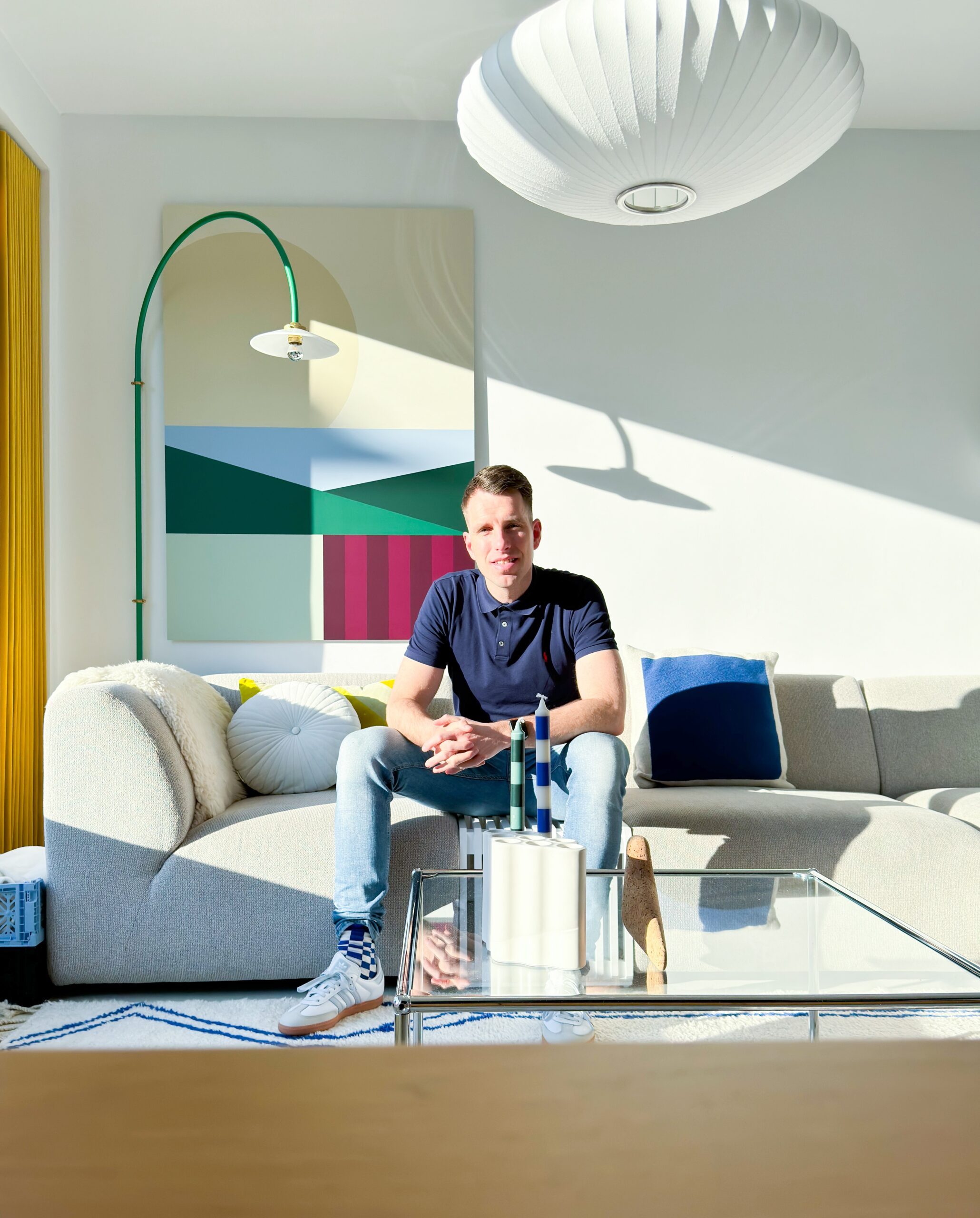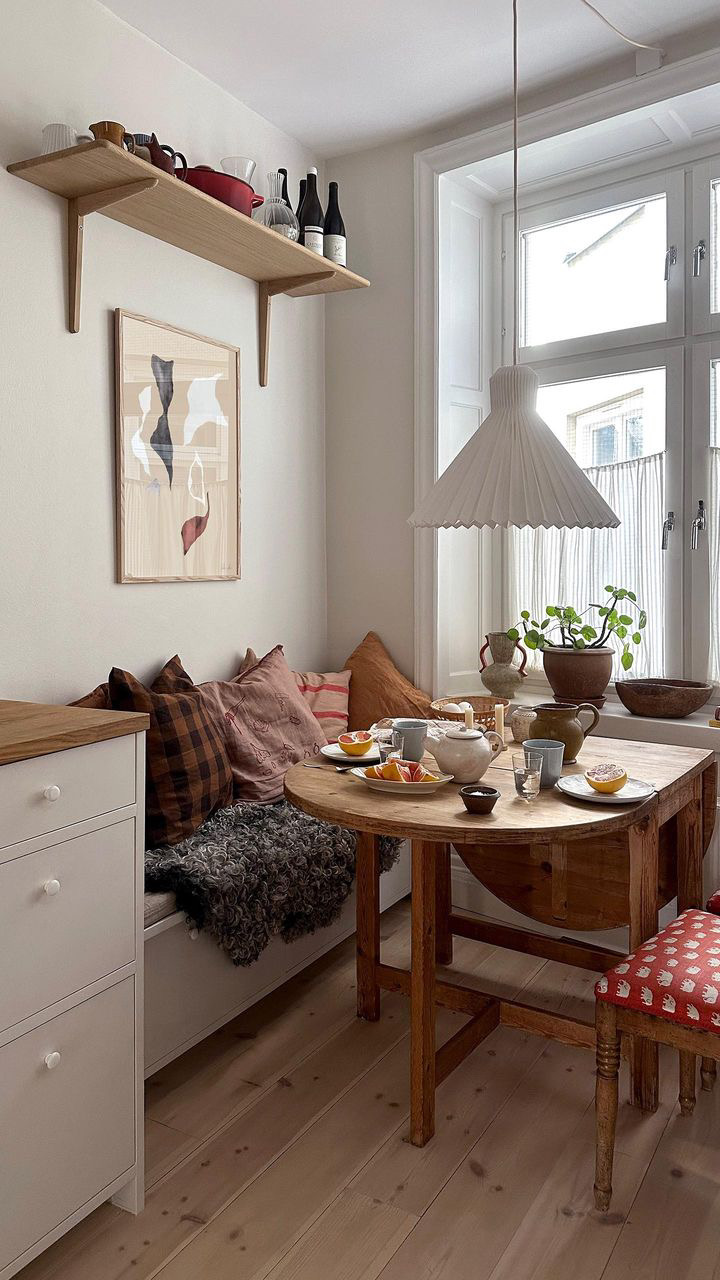Open layouts are social and space-efficient, but they can sometimes be challenging to furnish. In an open layout, the room needs to serve multiple purposes and be decorated for various functions, while also ensuring a cohesive and interesting design.
In this post we’ve collected some great tips while furnishing.
Dare to mix different materials
It’s easy to think you should stick to one type of wood or fabric to tie the room together, but this can actually make the room feel flat and harder for the eye to differentiate the various parts.
In this post, I write about why and how to work with different types of wood.
Working with different types of textiles is also a great way to create that cozy feeling in a room. For example, a large, fluffy rug can define the “living room area,” while a jute rug under the dining area adds a different texture and the feel of another room. The rugs help create a sense of distinct spaces within the room and adds a homely feeling to the space.
Add focal points
When working with a large room that needs to include several “rooms” in the same space, it’s a good idea to help the eye by creating focal points. If nothing stands out or draws attention, the room can easily feel flat and boring, or the other way around, cluttered and overwhelming for those in it.
Working with focal points means adding something that deviates from the pattern. For example, a large pot, a gallery wall, a cool lamp, a fireplace, or standout patterns.
Work with varying heights
In an open floor plan, it can be beneficial to create varying heights in both furniture and decorations. This helps add dimensions to the room, making it both interesting and cozy. Choose a low coffee table, a tall bookshelf, mount wall shelves, hang pictures in a gallery wall all the way up to the ceiling or even down to the floor. Plants are also a great way to add height; choose a large plant that stands out and adds delightful greenery.
Furniture of different heights can also help to break up and delineate the room into its various areas.
Go for recurring colors
If your open layout feels unbalanced, it might be a good idea to review your color choices. Adding accent colors to the room is a way to tie your design together. When a color reccurs throughout the different “rooms” of your space, the room feels cohesive.
A good guideline to use is the 60-30-10 rule. 60% of the room should contain a base color (e.g., walls, ceiling), 30% a secondary color (e.g., furniture), and finally, 10% with an accent color.
All are equally important for achieving balance. Perhaps it’s the accent color that’s missing to pull your design together? Make sure the color appears in at least three places in your room to achieve the right effect.






